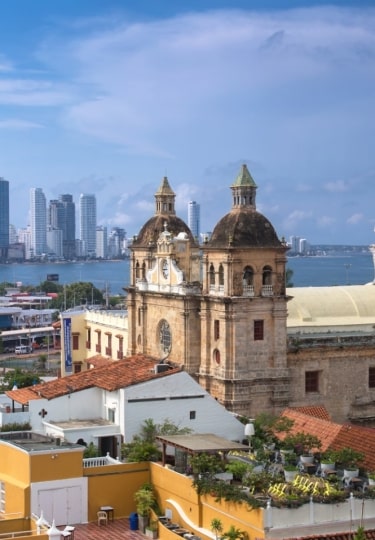What is Cartagena known for? Cartagena des Indias, to use its official name, is an extravagantly beautiful city lying on the coast of Colombia in the southern Caribbean. The atmospheric Old City, founded in 1533 on a headland in Cartagena Bay and encircled by massive ramparts, is a striking contrast to the ultra-modern, high-rise condos that line the Bocagrande shoreline, Colombia’s answer to Miami Beach.
You’ll see buildings in bright sherbert colors, spectacular street art, elegant plazas, and ornate churches. There’s music everywhere, and the sultry Caribbean heat encourages a happy, laid-back approach to life.
Lose yourself wandering the vibrant streets of Centro, the historic center, admire street art in hipster Getsemaní, or soak up the sunshine in the dreamy Rosario Islands.
Ciudad Amurallada
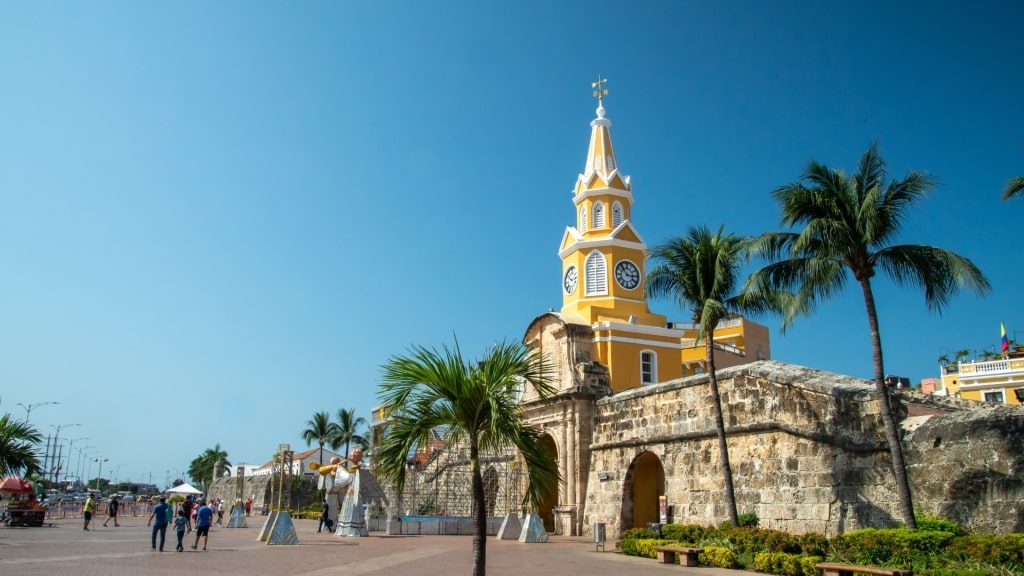
Ciudad Amurallada
One of the best things to do in Cartagena is to visit its historic center, Ciudad Amurallada. Also called the Walled City, or Old City, it’s encircled by massive coral stone ramparts, pockmarked with the indentations of cannon balls.
The walls were built in the 16th century as protection against pirate attacks. And there was much to defend; Cartagena grew rich under Spanish colonial rule, exporting gold and silver, and acting as a center of the slave trade. This in part ill-gotten wealth is still reflected in the grand mansions, stately plazas, and elaborate churches.
There’s color everywhere you turn in the city center. Wooden balconies are festooned with flowers, while buildings are painted in bright, sherbert shades. Unsurprisingly, the entire historic center has been designated a UNESCO World Heritage Site since 1984. Exploring it is a joy, and best done on foot.
Las Murallas
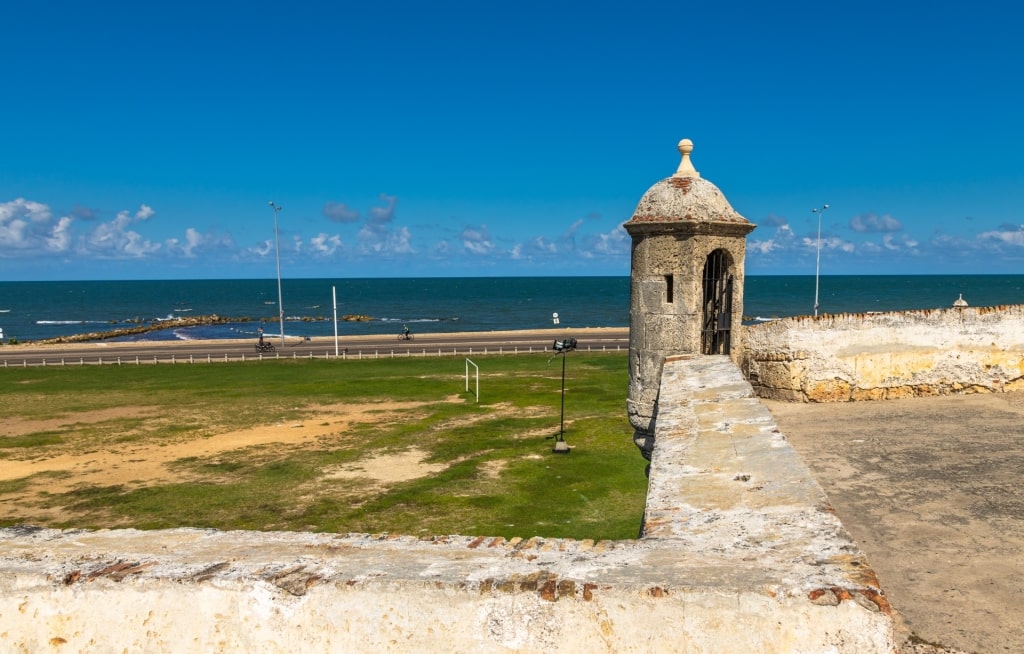
Las Murallas
The thick city walls, which took 200 years to complete, are impressively intact. You can walk along various stretches of the ramparts, gazing at the sea and enjoying the cooling breeze.
The walls are built in sections. Some have been destroyed, but there are frequent sets of steps where you can get up and down. Better still, take a guided tour and learn about the city’s history while enjoying the views.
Castillo de San Felipe de Barajas
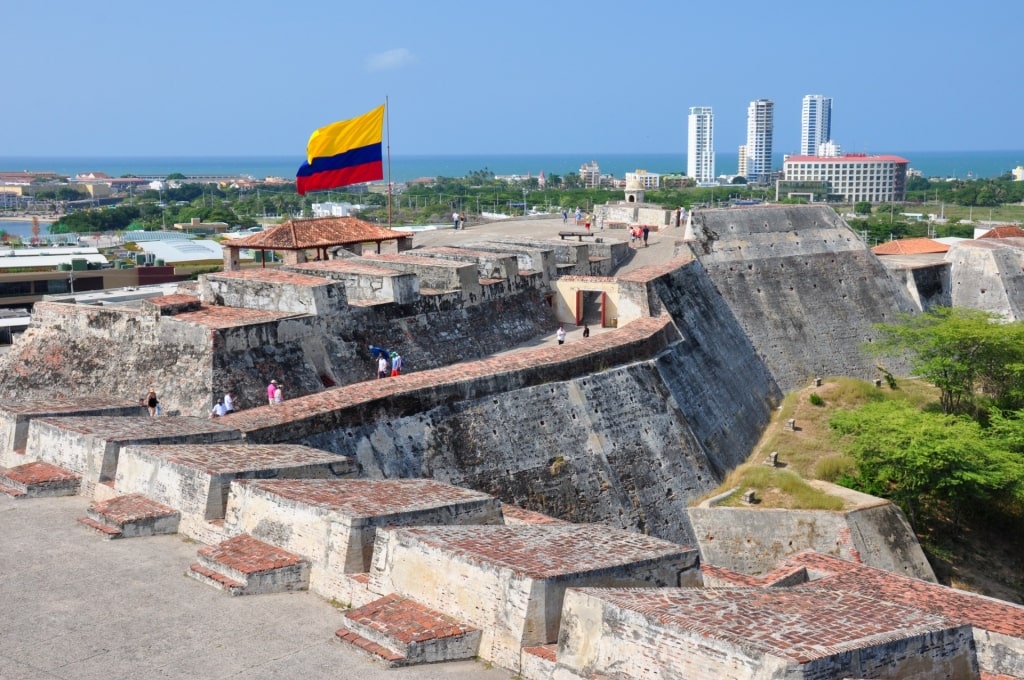
Castillo de San Felipe de Barajas
Castillo de San Felipe de Barajas is a near-impenetrable fortress guarding the old city, sprawling over the San Lázaro hill, across the bridge from the Getsemaní neighborhood.
Building commenced on the structure in 1657 and it was enlarged in 1762. A series of tunnels crisscross the fortress underground, cleverly designed to bring provisions to the inhabitants and function as escape routes. As you walk through the tunnels on a guided tour, you’ll be aware of the sharp acoustics; they were built to echo the sounds of any approaching enemies’ footsteps.
Otherwise, simply wander around the ramparts, looking at the views across the old city and the new. Be aware that you have to walk up a long ramp to visit the fortress with little shade, so bring water on a hot day.
Cartagena Cathedral
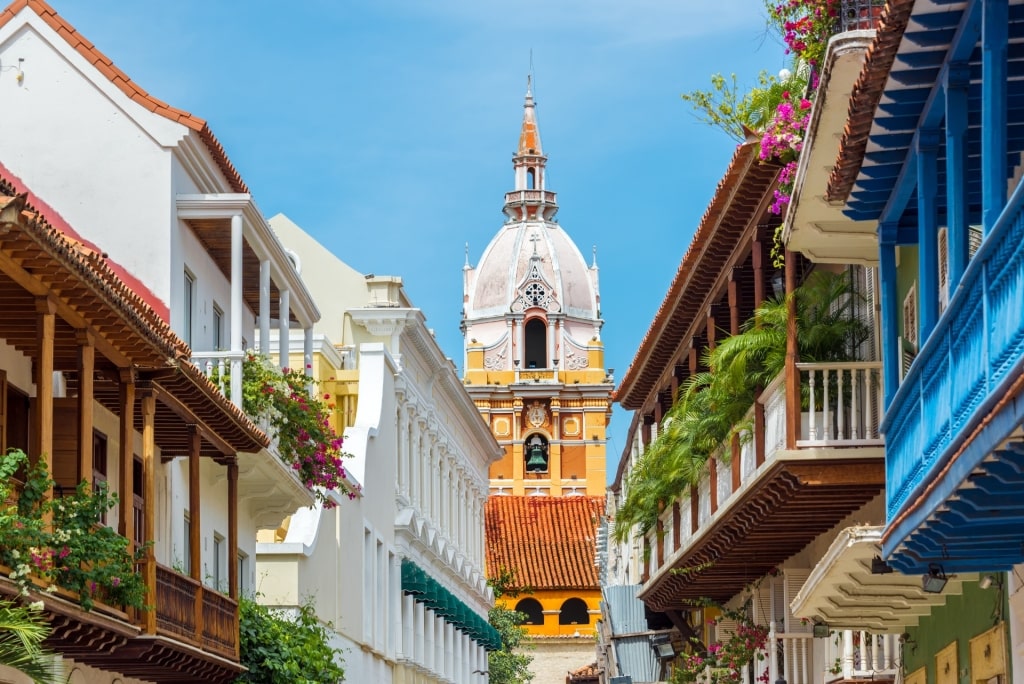
Cartagena Cathedral
Cartagena’s majestic cathedral, built in the 16th century, stands on a corner of Plaza de Bolivar. You can’t miss it, thanks to the bright yellow walls and distinctive domed tower.
The cathedral was partly destroyed by cannon fire from the privateer Francis Drake, who laid siege to the town in 1586, when the building was still under construction.
Over the years, various other changes have been made, including some controversial murals created by Gaston Lelarge, a French architect, in the early 20th century. These have since been removed. A refurbishment in the 1970s restored the cathedral to its original glory.
Inside, gaze at graceful archways and elegant marble floors. The gilded altar dates back to the 18th century. There are beautiful stone carvings of the stations of the cross framing the nave, while statues of four saints stand inside the main door.
Plaza de la Aduana
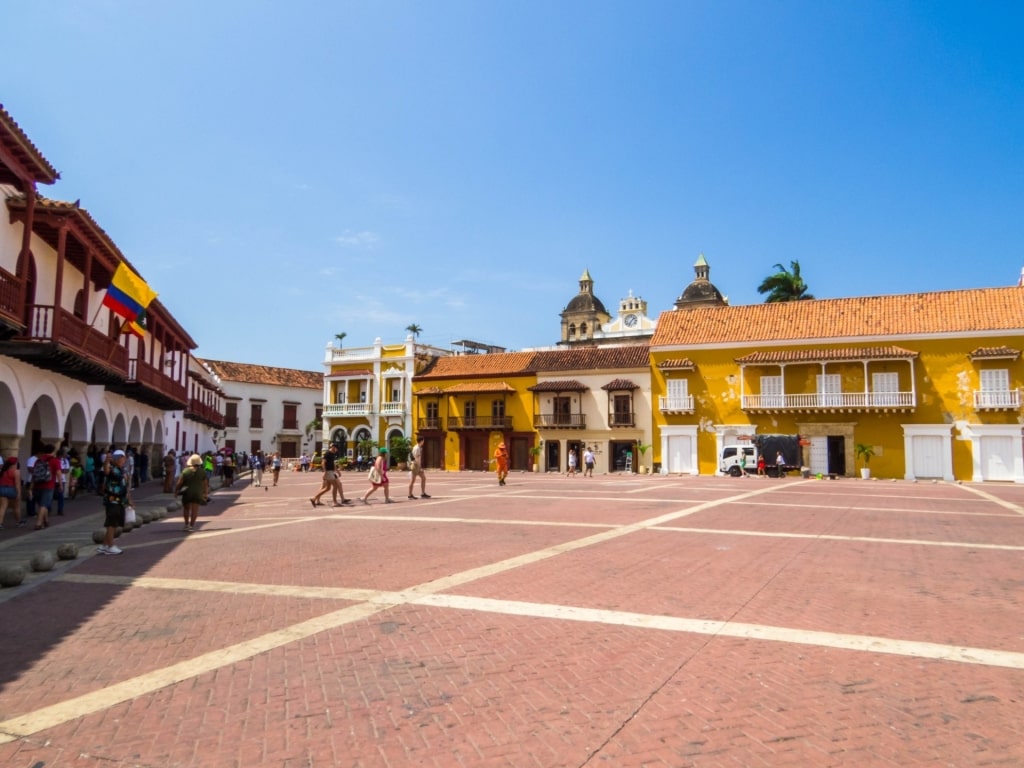
Plaza de la Aduana
One of the most elegant squares in the Old City is Plaza de la Aduana, a former parade ground. A statue of Christopher Columbus stands at the center.
This plaza is where all the government buildings were located, although they have different uses today. What was the Royal Customs House, for example, is now the City Hall.
During Spanish colonial times, what’s now a peaceful, sunny square was a hive of activity, as this is where all goods coming into Colombia arrived—everything from mining equipment to slaves.
Palenqueras
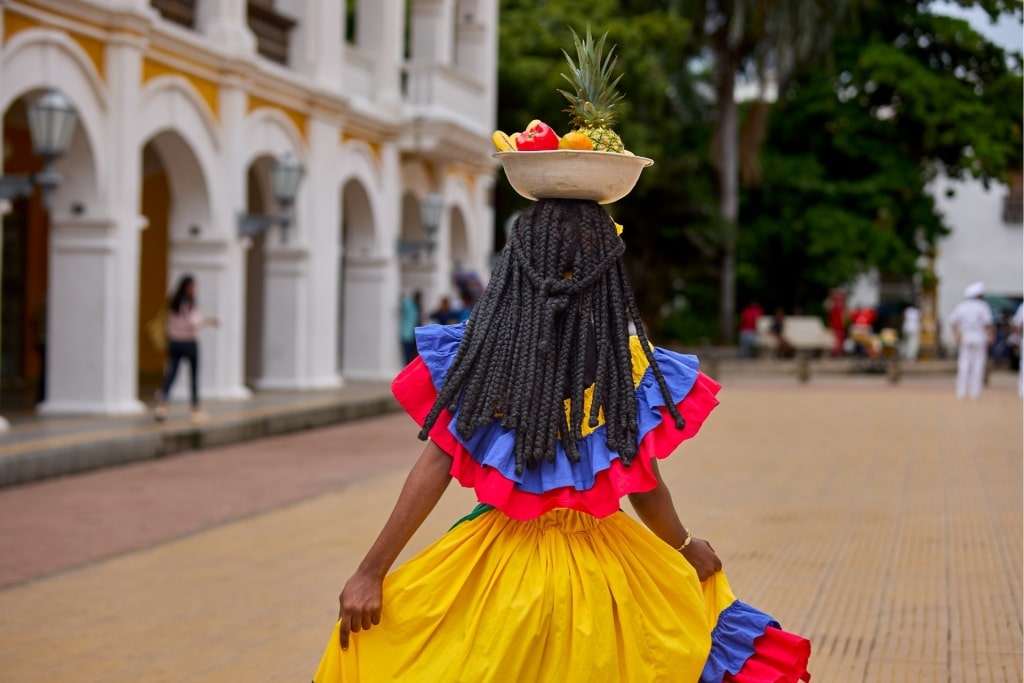
Palenquera
You’ll see women around Cartagena in turbans and brightly colored frilly dresses, some in the red, yellow, and blue of the Colombian flag, carrying baskets of tropical fruit and posing for photographs.
These women are Palenqueras, the descendants of fugitive slaves brought from Africa. They come from the town of San Basilio de Palenque, 31 miles from Cartagena, founded in the 15th century by Bantu-speaking king Benkos Biohó. The town was granted a Royal Decree in 1691 guaranteeing its people freedom from persecution provided they stopped providing a haven for any more escaped slaves.
While the palenqueras have preserved their own language, music, and cultural traditions, San Basilio endured severe poverty due to its isolation. The entrepreneurial women of the town therefore headed to Cartagena to sell the one commodity they had in abundance—fruit.
Today, they’re an essential part of the culture of Cartagena, but their town is still impoverished and they rely on tourist dollars for their income. So if you want to photograph a Palenquera, you should offer them some money.
The Palace of the Inquisition
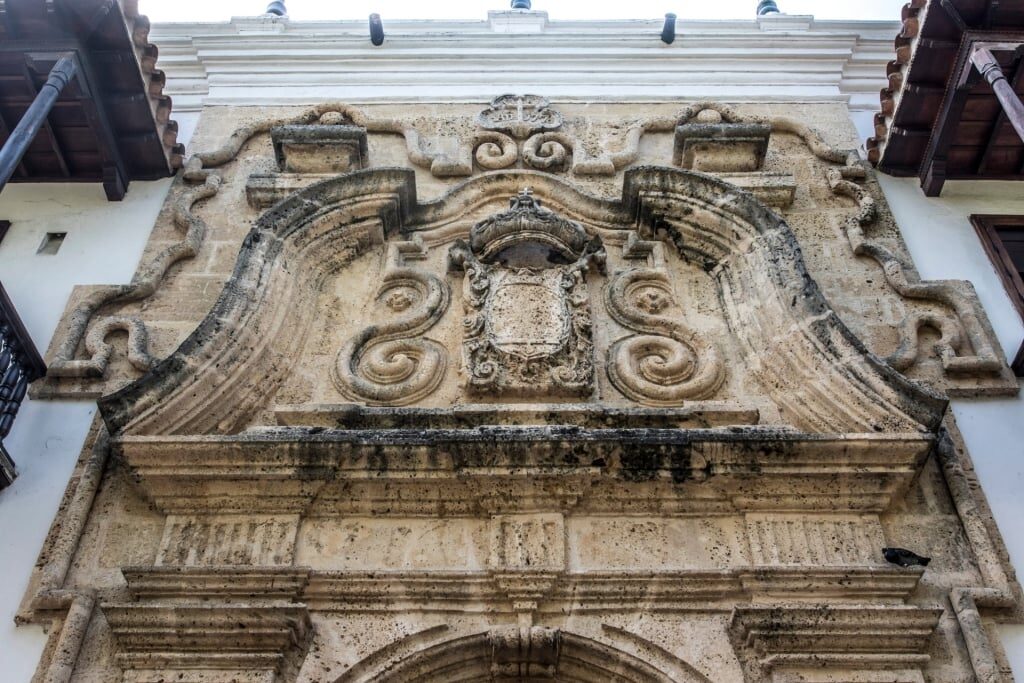
Palace of the Inquisition
The grand Palace of the Inquisition, completed in 1776 with an elaborate baroque stone gateway and long wooden balconies, may be an impressive sight on Plaza de Bolivar but has a grisly past.
This is where the Spanish Inquisition attempted to stamp out what it believed to be heresy in colonial times. Today, it’s a museum where you can see horrifying instruments of torture, as well as historical artifacts ranging from paintings to historical maps and pre-Columbian pottery.
Heretics were denounced from a small window before being tried for their “crimes”, which included magic, blasphemy, and witchcraft. Some 800 people were executed, some in public by being burned at the stake. The court remained in session here until as recently as 1821.
Read: Best Places to Visit in South America
Torre del Reloj
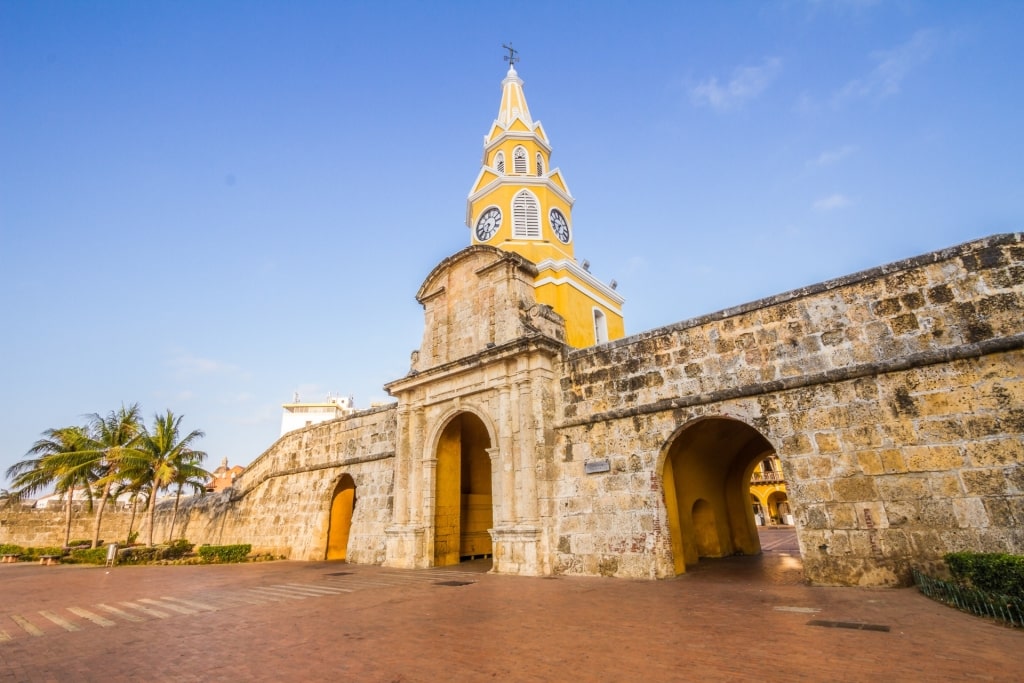
Torre del Reloj
The distinctive yellow and white Clock Tower is a symbol of Cartagena. It’s located at Puerta del Reloj, the original city gates. A tower was first built here in 1601, forming one end of a drawbridge that connected the Getsemaní neighborhood with the Old City. In those days, the gate was called La Boca del Puente, or the “mouth of the bridge”.
The tower was rebuilt in 1888 and it’s this version that you see today, its bright, banana-yellow spire visible from anywhere in the Old City. The clock that was installed during the renovation was replaced in the early 20th century with a Swiss model, which still keeps accurate time today.
Walk through the Puerta del Reloj under the clock tower and you’ll be on the busy Plaza de los Coches, lined with colorful, traditional houses. A statue of Pedro de Heredia, who founded the city, stands at the center. While this bustling spot, famous for its confectionery stalls, is a tourist attraction today, it has a darker past; it once served as a market for trading slaves.
Coffee
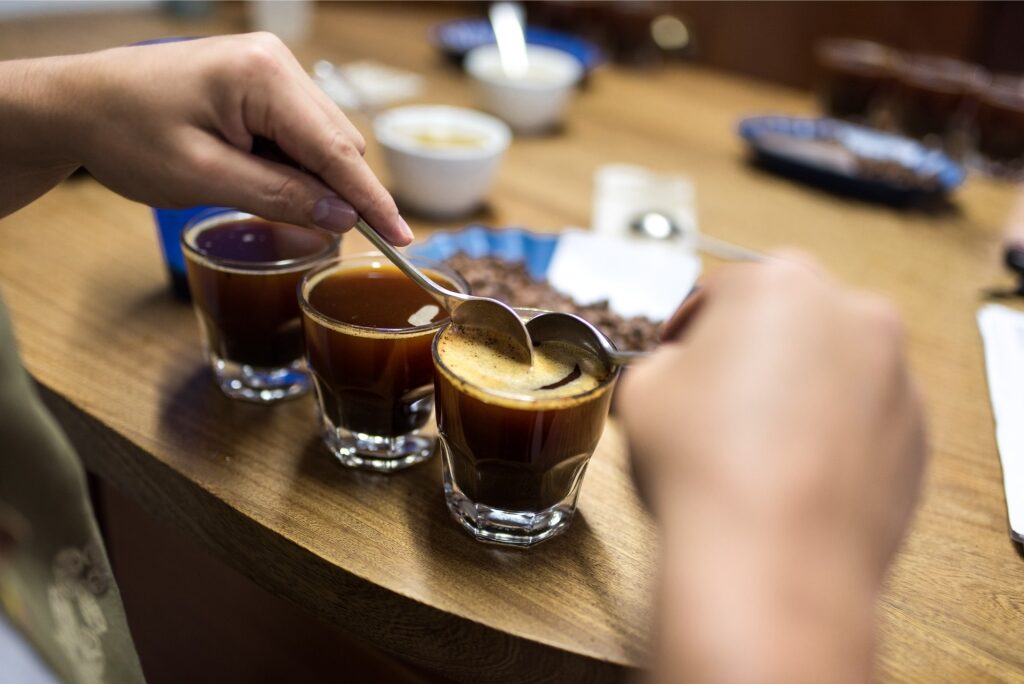
Colombian coffee
Colombia is famed for its coffee; it’s the third-largest producer of coffee beans in the world. As such, you can expect some top-quality cups here.
You could join a coffee workshop for a gourmet tasting, or simply relax in one of the many coffee shops. Try Libertario Coffee Roasters in Getsemaní, or Café del Mural in the same neighborhood, an atmospheric coffee “laboratory” that offers tasting experiences.
Café San Alberto, using beans from the San Alberto Estate, justifiably refers to itself as a “temple” for the coffee aficionado. You’ll find it on Plaza Santo Domingo in the Old City.
Gabriel Garcia Marquez
Cartagena is known for one of its most famous residents, Gabriel García Márquez, or “Gabo,” as he’s popularly known. The Colombian-born writer first lived in Cartagena in the late 1940s, when he was employed as a journalist.
Much of his work was inspired by street life inside the walled city, everyday characters, locations, and events that would color his writing. Both Love in the Time of Cholera and Of Love and Other Demons were inspired by the city. Gabo received the Nobel Prize for Literature in 1982.
Literature fans can join tours following the trail of the writer. His ashes are interred at the cloister of La Merced monastery, in the grounds of the University of Cartagena. You can see the house where he lived, a peach-colored building on Calle del Curato in the Old City; it’s marked on maps but is not open to the public.
Tours include the historic Sofitel Legend Santa Clara Hotel, where he would sit at the El Coro bar and observe the comings and goings, and the San Diego neighborhood, which inspired many of the scenes in his books. Needless to say, you’ll see his books for sale all over the city.
The Rosario Islands
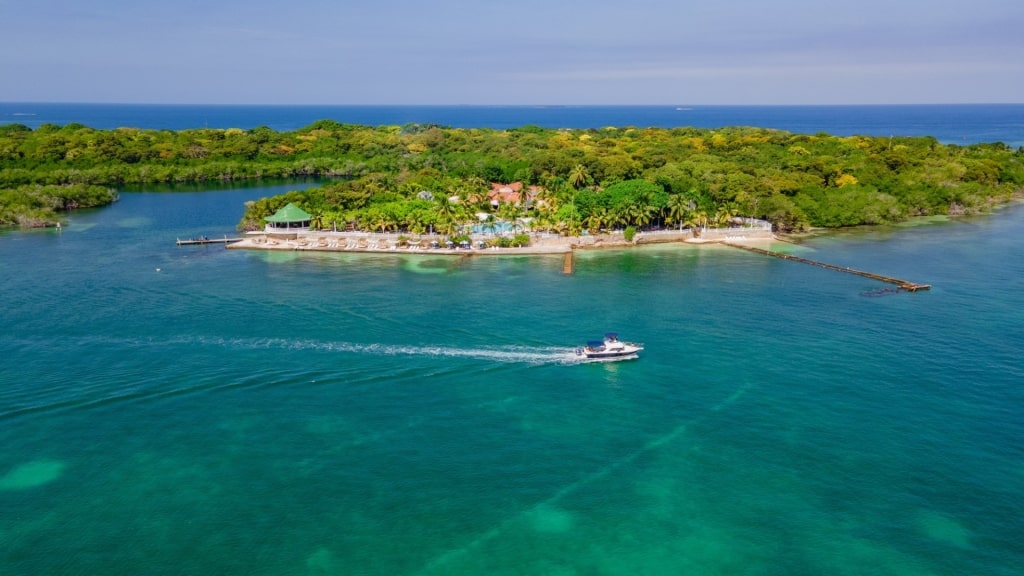
Rosario Islands
A short boat ride from the city, the Rosario Islands is an archipelago of 27 islands composed of coral reefs, mangroves, and white sand beaches. The name derives from the idea that the islands are strung together in a chain like rosary beads. This is where locals go on weekends for sunbathing, snorkeling, and diving.
The islands are protected as a national park and make a blissful day trip if you’re craving some beach time. The water is exceptionally clear here and rich with marine life, from jaunty clownfish to graceful manta rays and barracuda. The journey by boat is about 60 minutes and most operators stop at one or two islands for swimming and snorkeling.
Emeralds
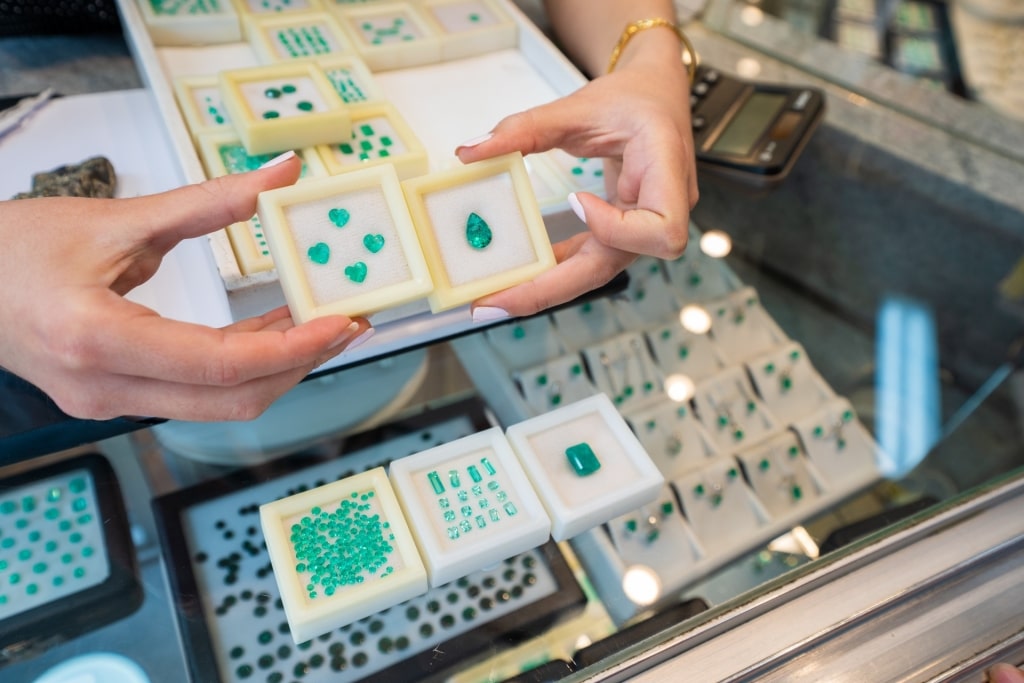
Emeralds
Colombia is famous for its brilliant green emeralds; up to 90 percent of the world’s emeralds are found here. Needless to say, you’ll find plenty of opportunities to buy them in Cartagena, set in gold or silver to create beautiful necklaces, rings, bracelets, and earrings.
Emeralds vary enormously in price and essentially, you get what you pay for. More affordable stones are likely to be opaque and more turquoise in hue, while the best are crystal-clear and a brilliant green. Any stone will have tiny features like miniature air bubbles or tiny crystals. If you’re shown something with no “inclusions”, as they’re called, when you hold the stone up to the light, it’s most likely to be a fake.
There’s an Emerald Museum at Joyeria Caribe on Plaza de Bolivar in the Old City, where you can learn about emerald mining, admire some precious specimens, and, of course, buy your own.
Getsemaní
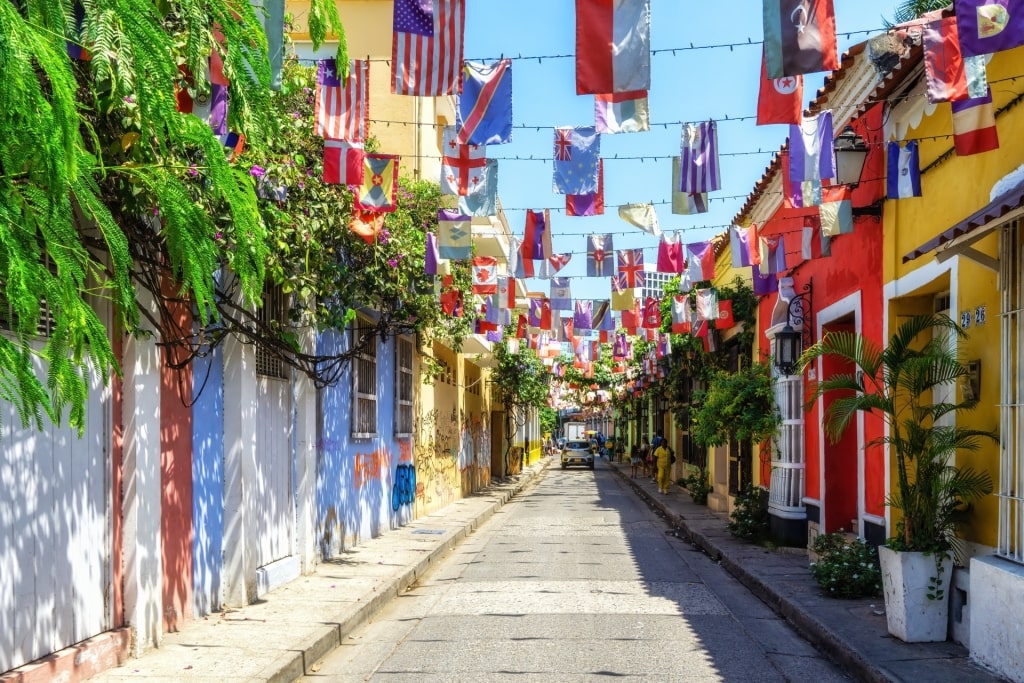
Getsemaní
Getsemaní is an up-and-coming and very fashionable area of Cartagena, a block of around 10 streets lying next to Centro, the original walled city. What used to be somewhat run down and gritty, originally serving as the workers’ neighborhood in colonial times, has now been gentrified and is packed with houses in every color of the rainbow, cool cafés, hip bars, and food stalls.
What Getsemaní is most famous for, though, is its street art. This is where the city’s artists express themselves, with spectacular murals, some carrying political messages and social commentary. Join a tour with a local to learn about the provenance of some of the art. You won’t find notable colonial buildings here, but this is a part of the city with real soul.
Street Food
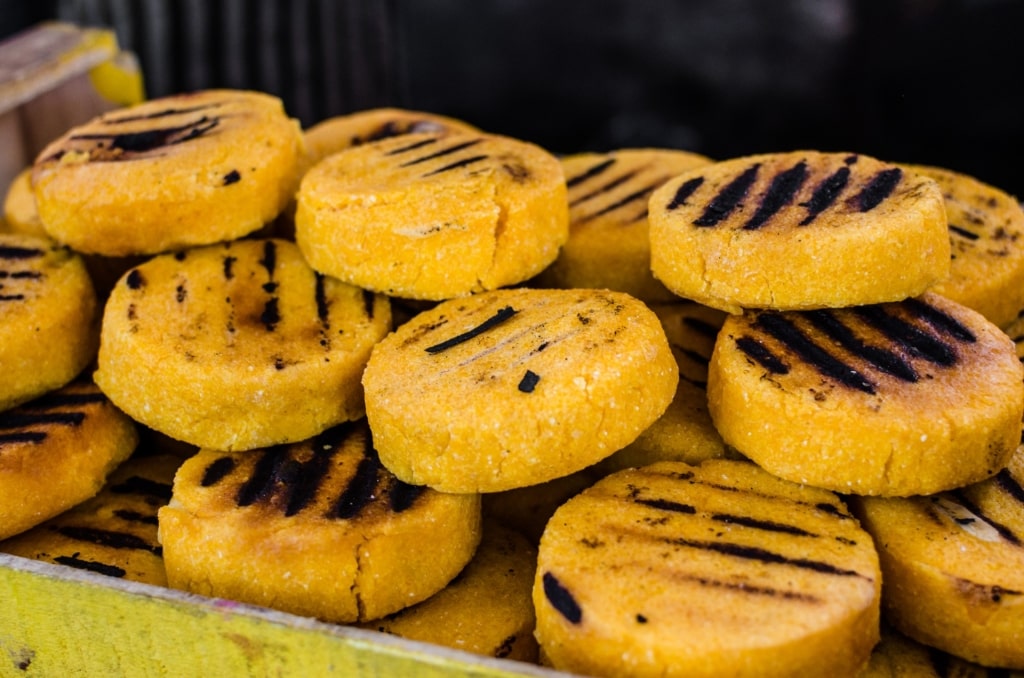
Arepas
Colombian cuisine blends the flavors of Africa, Spain, and indigenous dishes, and Cartagena is a wonderful place to try it. The streets of the Old City and Plaza de la Trinidad in Getsemaní are full of delicious wafting aromas from street food stalls, inviting you to sample the local specialties.
Try an arepa or an almojábana, a ball of cheese bread usually eaten for breakfast or a snack. Patacones are smashed and twice-fried green plantains, which make a delicious snack.
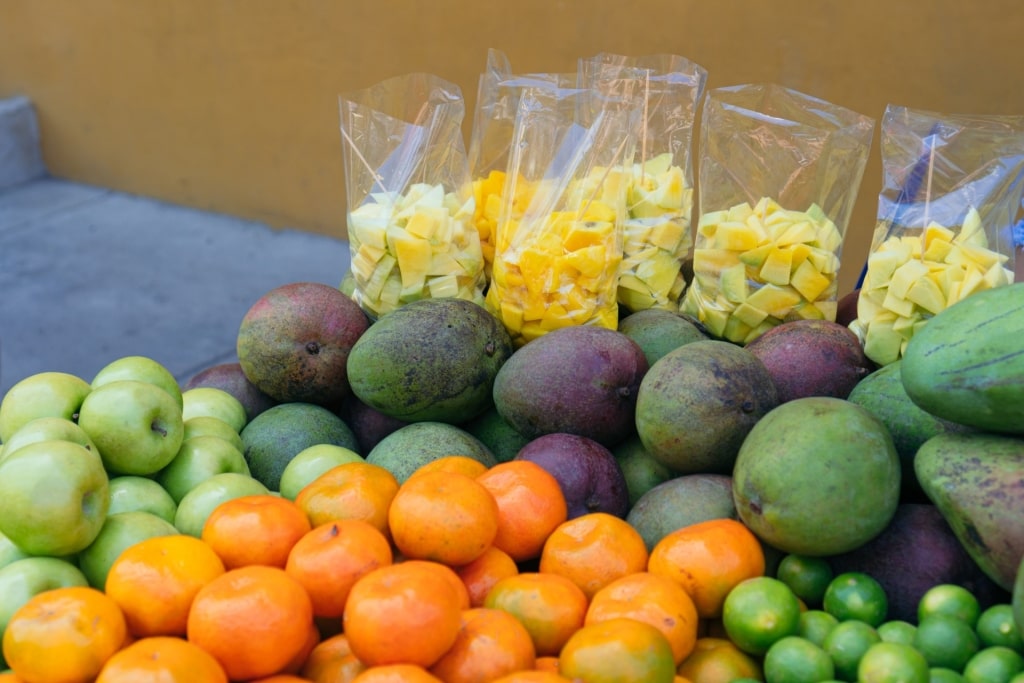
Fruits
Coctel de camarones is essentially a shrimp cocktail served in a styrofoam cup and eaten on the hoof. You’ll also see mouth-watering fresh tropical fruit, from mango to pineapple and watermelon. Street vendors also sell limonada de coco, which is a refreshing blend of coconut milk, lime juice, and ice.
If you’re craving a carb hit, try a local specialty, cocadas, which are balls of shredded coconut with added flavor, from chocolate to guava.
Read: South American Food
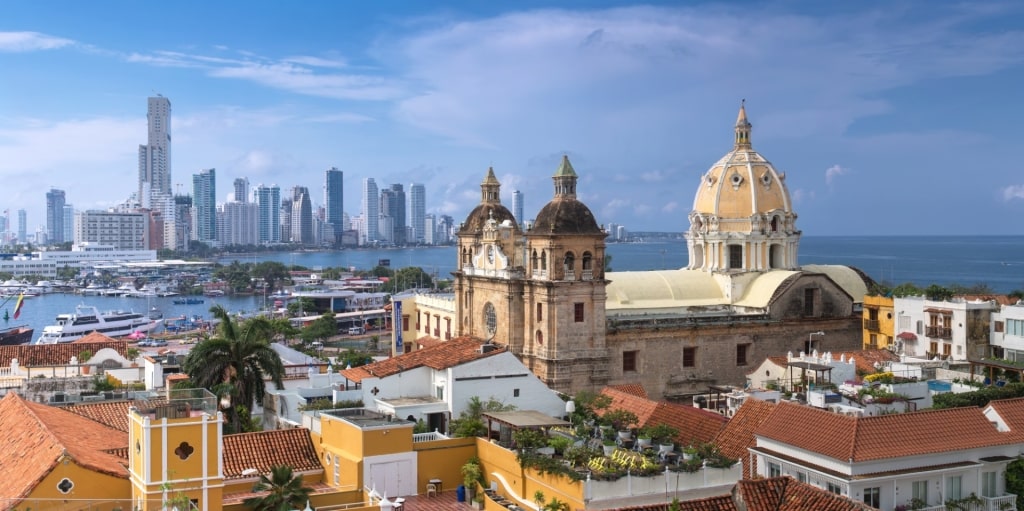
Cartagena
Are you ready to discover the jewel in Colombia’s crown for yourself? Browse Celebrity’s cruises to Cartagena and plan your tropical adventure.
